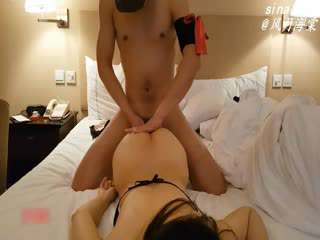空姐制服『小刘涛』勾搭两粉丝一起3P.x264.aac
发布于
3649
热门国产:

热播
涩会传媒SH-002万圣回魂夜-夏沫
5570 723

热播
思雅雅黑色蕾丝性感内衣
8597 169

热播
光棍大战 姐妹盛宴 两段性爱60分钟完整记录[下][MD0070]
4681 861

热播
颜值不错白衣美少妇露奶诱惑哺乳期喂奶挤乳汁奶子白又挺很是诱惑喜欢不要错过1
5491 588

热播
身材丰满的人妻偷情的时候很主动
2320 419

热播
[软萌萝莉小仙]-动漫袜子_~1
3737 613

热播
[按摩]少妇去按摩院做按摩遇上了两个心怀不轨的按摩师结
9416 485

热播
19岁嫩妹高级私人定制制服诱惑篇_20180120DDJSKIBH2
3744 779

热播
酱油少妇 软不了的烦恼[QD001]
2089 445

热播
呆哥大站丰满人妻小V第3部打完奶泡各种姿势啪啪高清无水
2566 456

热播
[3P]去做家政不慎被两兄弟疯狂抽插,不知是福是祸
7939 470

热播
午夜入室[WY0003]乌鸦传媒
3306 846

热播
5203-朋友刚走小肥哥就迫不及待按到模特级别女友啪啪
1633 527

热播
表姐表妹钓粉丝疯狂4P
5694 683

热播
钢琴的错[涩会传媒 SH010]
6093 629

热播
[百度云泄密系列]某航空公司空.姐与男友酒店激.情视频和生活照高清无水1
3087 176

热播
国产夫妻花式做爱 男的要操女的屁眼 宝宝要内射
1489 704

热播
MAD-026花田性事-倪哇哇
1254 672

热播
[酒店偷情]黑丝性感美女酒店和情人偷情
5521 410

热播
女神鹿少女洗澡時被侵犯,操的高喊_好爽,受不了,好痛啊!被操哭了!_20180527HGBGGTHHG5
6005 910

热播
靠直播赚大钱,激情爆操白虎嫩b媳妇
3784 584

热播
非常入戏的外围模特拍摄卖肉宣传片摄影师给她一个假屌让她尽情发挥这JB又舔又插
2127 270

热播
不一样的杨幂让你看.10
3380 553

热播
視訊美女寵愛萬千
6819 885
热门推荐
推荐